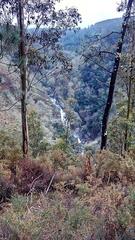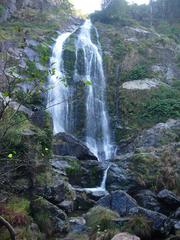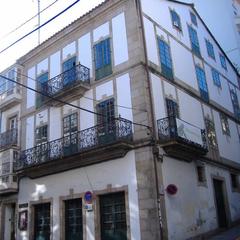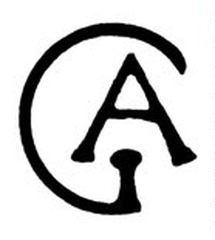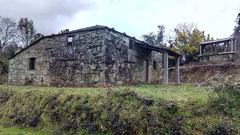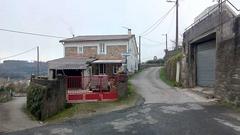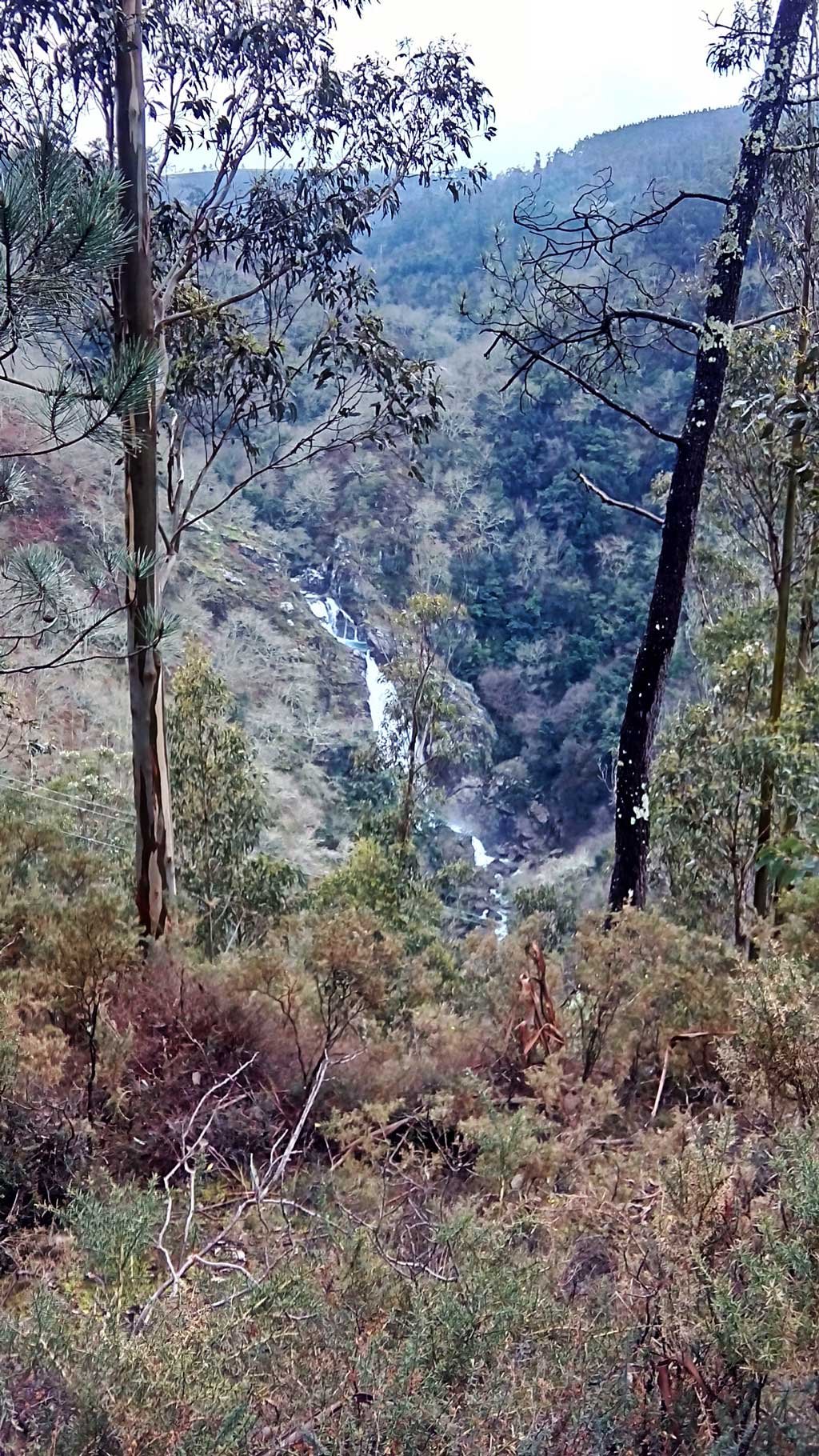
Comprehensive Guide to Visiting Viladonelle, Neda, and Ferrol, Spain
Date: 16/08/2024
Introduction
Welcome to the enchanting region of Galicia, Spain, which is home to the historically rich towns of Viladonelle, Neda, and Ferrol. This comprehensive guide aims to provide you with an in-depth look at the cultural, historical, and natural beauty that these locations have to offer. From the medieval architecture of Igrexa de Santo André de Viladonelle to the strategic maritime significance of Ferrol, these towns are a treasure trove of historical landmarks and cultural insights (Turismo de Galicia). Whether you are a history enthusiast, a pilgrim on the Camino Inglés, or simply a traveler seeking new adventures, this guide will equip you with all the necessary information to make your visit unforgettable. Dive into the rich tapestry of medieval heritage, maritime history, and religious significance that define these regions and discover why they remain significant in Spain’s cultural narrative (Asantiago Voy).
Table of Contents
- Introduction
- Historical Background
- Practical Information for Visitors
- Nearby Attractions and Accommodation
- Visitor Tips for Viladonelle, Neda, and Ferrol, Spain
- Discover the Hidden Gems and Historical Sites of Viladonelle, Neda, and Ferrol, Spain
- Conclusion
Historical Background
Early History and Medieval Period
Viladonelle, Neda, and Ferrol are regions steeped in rich history, dating back to ancient times. The area around Viladonelle, particularly the parish of Santo André, has been inhabited since the early medieval period. The Igrexa de Santo André de Viladonelle is a significant historical landmark in this region. This church, located in the parish of Viladonelle, Neda, in the province of A Coruña, is a testament to the area’s medieval heritage (Turismo de Galicia). Visitors can explore the church’s history, architecture, and religious significance.
Neda, a medieval town, is renowned for its historical significance and its famous bread. The town’s medieval roots are evident in its architecture and layout, which have been preserved over the centuries. The town’s strategic location along the English Way (Camino Inglés) made it a crucial stop for pilgrims traveling to Santiago de Compostela (Asantiago Voy).
The English Way (Camino Inglés)
The English Way, or Camino Inglés, is one of the many routes that pilgrims have taken to reach Santiago de Compostela. This route was particularly popular among English and Irish pilgrims who disembarked at the ports of A Coruña or Ferrol. The route is divided into several stages, with the first stage starting from Ferrol and passing through Neda (Asantiago Voy).
Ferrol, a city deeply linked to the sea and navigation, has a rich maritime history. The city’s old town, Ferrol Vello, has been declared a Bien de Interés Cultural (Good of Cultural Interest). Key historical landmarks in Ferrol include the Fortress of San Felipe and the Cathedral of San Julián. These sites reflect the city’s strategic importance and its role in protecting pilgrims and traders who arrived by sea (Asantiago Voy).
Military and Maritime Significance
Ferrol’s military and maritime significance is highlighted by its fortresses and naval installations. The Fortress of San Felipe and the Castle of A Palma are monumental military constructions that guarded the entrance to the Ferrol estuary. These fortifications were crucial in protecting the city and its port from potential invaders. The Tower of Hercules, a Roman lighthouse in A Coruña, also played a vital role in guiding ships safely to the port (Asantiago Voy).
The Andrade Lineage
Pontedeume, another key location along the English Way, is known as the city of Andrade. The Andrade family was a prominent Galician noble lineage that left a significant mark on the region. The Torreón dos Andrade and the Castelo dos Andrade are notable historical landmarks in Pontedeume. These structures reflect the power and influence of the Andrade family during the medieval period (Asantiago Voy).
Religious and Cultural Heritage
The religious and cultural heritage of the region is evident in its numerous churches, monasteries, and other religious sites. The Monastery of San Xoán de Caaveiro, located in the As Fragas do Eume natural park, is a beautiful example of medieval monastic architecture. This monastery, surrounded by a thousand-year-old native forest and bathed by the Eume River, offers a glimpse into the spiritual and cultural life of the region during the medieval period (Asantiago Voy).
Practical Information for Visitors
To make the most of your visit to the Igrexa de Santo André de Viladonelle, here is some practical information:
- Visiting Hours: The church is open to visitors from 10 am to 6 pm daily, except on religious holidays.
- Tickets: Entrance to the church is free, but donations are welcome to help with the upkeep.
- Travel Tips: The church is easily accessible by car, and there is ample parking available nearby. Guided tours are available on request, and it’s advisable to book in advance.
Nearby Attractions and Accommodation
While visiting Viladonelle, Neda, and Ferrol, consider exploring other nearby attractions. The Fortress of San Felipe, Cathedral of San Julián, and the Monastery of San Xoán de Caaveiro are must-see sites. Accommodation options range from hostels to rural houses, ensuring a comfortable stay for all visitors.
Visitor Tips for Viladonelle, Neda, and Ferrol, Spain
Best Time to Visit
Spring (March to May)
Spring is ideal for visiting these regions. The weather is warm enough to enjoy the beaches, and the crowds are fewer. Hotel prices are generally lower.
Autumn (September to November)
Autumn offers a cooler climate perfect for hiking and exploring historical sites. The reduced tourist influx also means more peaceful sightseeing.
Navigating the Camino Inglés
The Camino Inglés, or English Way, is a popular pilgrimage route starting in Ferrol and passing through Neda.
- Stage 1: Begins at the port of Curuxeiras in Ferrol. Key landmarks include the co-cathedral of San Xiao and the convent of San Francisco.
- Stage 2: Pilgrims can visit the monastery of San Martiño de Xuvia, known for its Romanesque apses and medieval sarcophagus.
Accommodation
For Camino Inglés pilgrims, hostels along the route offer budget-friendly options with basic amenities. After reaching Neda (15 km from Ferrol), you can stay overnight or continue to Pontedeume (an additional 16 km).
Cultural Etiquette
- Formality: Use the formal “usted” unless well-acquainted.
- Dress Modestly: Especially in churches, avoid wearing swimsuits in public areas outside the beach.
- Tipping: It’s appreciated but not obligatory; small tips in restaurants and for services like taxis and hotel porters are customary.
Key Attractions
Torre de Hércules
Located in nearby A Coruña, this is the oldest Roman lighthouse still in use. It offers panoramic views and insights into ancient maritime history. Visiting Hours: 10 AM - 6 PM. Tickets: €3.
Windrose (Rose of the Winds)
Also in A Coruña, this 25-meter diameter sculpture is situated in the Sculpture Park at the foot of the Tower of Hercules. It’s a popular spot for both locals and tourists.
Monumento a los Fusilados Guerra Civil
Located in Campo da Rata, this monument commemorates the victims of the Spanish Civil War. It serves as a poignant reminder of the country’s turbulent history.
Local Festivals and Events
San Mateo Festival
Held in September in La Rioja, this festival celebrates the local wine harvest with music, dancing, and traditional grape-crushing events - a must-visit for wine enthusiasts.
Festa de la Merce
In Barcelona, this is one of the largest festivals celebrating the city’s patron saint, featuring cultural activities, fireworks, and plenty of local wine.
Dining and Social Life
Spanish social life revolves around family and food. Lunch (la comida) is the main meal of the day, lasting from 2 to 4 PM, followed by a siesta. Evening meals start late, usually around 10 PM.
When dining out, it’s common to meet friends in restaurants rather than at home. If invited to someone’s home, bring a small gift such as chocolates, wine, or flowers.
Safety and Emergency Information
Spain is generally safe for tourists. The local emergency number is 112 for police, fire, or medical emergencies. Carry a copy of your passport and travel insurance details at all times.
Language Tips
While many Spaniards speak English, learning a few basic Spanish phrases can be helpful. Simple greetings like “Buenos días” (Good morning) and “Buenas tardes” (Good afternoon) are appreciated. Using the formal “usted” when addressing new acquaintances shows respect.
Outdoor Activities
Hiking and Cycling
The region offers numerous trails. The Camino Inglés is a popular hiking route. For cycling enthusiasts, there are dedicated road cycling and mountain biking routes.
Surfing
Northern Spain, including the area around Ferrol, is known for excellent surfing conditions, especially in October. The cooler weather and fewer crowds make it an ideal time for both beginners and experienced surfers. A wetsuit is recommended as the waters can be chilly.
Practical Tips
- Currency: Spain uses the Euro (€). Credit and debit cards are widely accepted, but it’s good to carry some cash for smaller establishments.
- Electricity: Standard voltage is 230V, and the frequency is 50Hz. Plugs are Type C and F.
- Time Zone: Spain operates on Central European Time (CET), which is UTC +1. During daylight saving time, it switches to Central European Summer Time (CEST), which is UTC +2.
- Public Transport: Spain has an extensive public transport network, including buses, trains, and metros. In Ferrol, local buses and taxis are readily available.
Discover the Hidden Gems and Historical Sites of Viladonelle, Neda, and Ferrol, Spain
Historical Significance
The English Way of the Camino de Santiago
Viladonelle, Neda, and Ferrol are integral parts of the English Way (Camino Inglés) of the Camino de Santiago, a historic pilgrimage route. This path has been traversed by pilgrims for centuries, seeking spiritual fulfillment and adventure. The route from Ferrol to Neda spans approximately 14.4 km (9 miles) and offers a mix of paved roads and dirt paths, predominantly following the Ría de Ferrol inlet (Trail to Peak).
Key Landmarks and Attractions
Pazo da Merced
Pazo da Merced is a historic manor located along the Ría de Ferrol, near the Ferrol train station. This beautiful hotel is steeped in history, with legends suggesting it is connected by an underwater tunnel to the San Martiño de Xubia church (Trail to Peak). The manor offers comfortable accommodations with river views, making it an ideal resting spot for pilgrims and tourists alike. Visiting Hours: Open daily from 10:00 AM to 6:00 PM. Tickets: €5 for adults, €3 for children.
San Martiño de Xubia Church
The San Martiño de Xubia church is another significant landmark in the area. This historic church is part of the rich cultural tapestry of the region and is linked to local legends involving Pazo da Merced. Visitors can explore the church’s architecture and learn about its historical importance. Visiting Hours: Open Monday to Saturday from 9:00 AM to 5:00 PM. Tickets: Free entry.
Ferrol Vello (Old Ferrol)
Ferrol Vello is the oldest part of Ferrol, characterized by its narrow cobblestone streets and historic buildings. Walking through this area, visitors can see remnants of the past, including collapsed or nearly collapsed buildings, which add to the area’s charm and historical significance (Spanish for Camino).
Barrio de La Magdalena
Barrio de La Magdalena is known for its colorful streets and traditional Galician architecture. This neighborhood offers a vibrant local culture and is a must-visit for those interested in exploring the historical and cultural aspects of Ferrol (Veronika’s Adventure).
Cultural Insights
Bread Making in Neda
Neda is renowned for its bread-making tradition, which is a significant part of the local economy. The town even has a monument dedicated to its famous bread. Visitors can learn about the bread-making process and sample some of the local specialties (Spanish for Camino).
Visitor Tips
Accommodation Options
There are several accommodation options available for visitors in Viladonelle, Neda, and Ferrol. The new municipal Albergue Casa do Mar de Ferrol, with 60 beds, opened in July 2023 and is located along the waterfront at 25 Estrada Alta (Pilgrimage Traveler). For those seeking more economical options, the Pensión Residencia Maragoto offers comfortable rooms and a good restaurant with a menu del dia for €9 (The Camino Provides).
Navigating the Camino Inglés
Navigating the Camino Inglés from Ferrol to Neda involves following well-marked trails with concrete waymarkers and blue signs. Starting from the Muelle Curuxeiras in Ferrol, pilgrims can pick up their credenciales from the tourist office located next to the stone marker (Spanish for Camino). The trail offers a mix of scenic views, including the Ría de Ferrol inlet and various historical landmarks.
Local Amenities
Neda and the adjoining town of Narón offer various amenities, including grocery stores, cafés, and family-run accommodations. Visitors can find everything they need for a comfortable stay, from basic necessities to local delicacies (Pilgrimage Traveler).
Activities and Experiences
Guided Walking Tours
Ferrol offers guided walking tours that provide a deep dive into the city’s historical and cultural heritage. These tours, led by knowledgeable local guides, cover key landmarks such as the San Xiao Castle, Plaza de Armas, and Barrio de La Magdalena. Participants can enjoy a sensory experience that includes tastings of Galician beer or wine (Veronika’s Adventure).
Exploring Natural Landscapes
The trail from Ferrol to Neda offers stunning natural landscapes, including views of the Ría de Ferrol inlet and various parks and green spaces. Visitors can enjoy leisurely walks, picnics, and other outdoor activities while taking in the scenic beauty of the region.
Local Cuisine
Sampling the local cuisine is a must for visitors. The region is known for its seafood, including calamares a la romana (fried squid), and other traditional Galician dishes. Many local restaurants and cafés offer a menu del dia, providing an affordable way to enjoy a variety of local flavors (Spanish for Camino).
Practical Information
Weather Considerations
The weather in this region can be unpredictable, with cool temperatures and occasional rain. Visitors are advised to carry appropriate clothing and gear, including raincoats and sturdy walking shoes, to ensure a comfortable and enjoyable experience.
Transportation
Ferrol is well-connected by train and bus, making it easy for visitors to reach the starting point of the Camino Inglés. The Ferrol train station is conveniently located near key landmarks and accommodation options, providing easy access for travelers (Trail to Peak).
Safety Tips
While the Camino Inglés is generally safe, visitors should take standard precautions, such as staying on marked trails, carrying a map or GPS device, and informing someone of their itinerary. It is also advisable to carry a basic first aid kit and sufficient water and snacks for the journey.
Frequently Asked Questions (FAQ)
Q1: What are the visiting hours for Pazo da Merced? A1: Pazo da Merced is open daily from 10:00 AM to 6:00 PM.
Q2: How much are the tickets for San Martiño de Xubia church? A2: Entry to San Martiño de Xubia church is free.
Q3: What is the best time to visit Viladonelle, Neda, and Ferrol? A3: The best time to visit is during the spring and autumn months when the weather is mild and local festivals are infull swing.
Q4: Are there any special events in Neda? A4: Yes, Neda hosts various local festivals and events throughout the year, celebrating its rich cultural heritage.
Q5: Is there public transportation available in Ferrol? A5: Yes, Ferrol is well-connected by train and bus, making it easy for visitors to navigate the region.
Conclusion
In conclusion, Viladonelle, Neda, and Ferrol offer a unique blend of historical, cultural, and natural attractions that make them must-visit destinations in Galicia, Spain. From the ancient Igrexa de Santo André de Viladonelle to the bustling maritime history of Ferrol, these areas provide a fascinating journey through time. Whether you are walking the Camino Inglés or exploring the local festivals and culinary delights, there is something for everyone. The region’s well-preserved medieval architecture, significant religious sites, and strategically important maritime landmarks offer a wealth of experiences that cater to diverse interests. The practical information provided in this guide, including visiting hours, ticket details, and travel tips, ensure that your visit is both enjoyable and enriching. For more updates and travel tips, don’t forget to follow us on social media and check out our related posts (Veronika’s Adventure, Spanish for Camino).
References
- Turismo de Galicia (n.d.). Igrexa de Santo André de Viladonelle. Retrieved from Turismo de Galicia
- Asantiago Voy (n.d.). Camino Inglés. Retrieved from Asantiago Voy
- Trail to Peak (2022, June 22). Camino Inglés Day 1: A Wonderful Walk from Ferrol to Neda. Retrieved from Trail to Peak
- Spanish for Camino (2019, March 22). Camino Inglés de Ferrol a Neda. Retrieved from Spanish for Camino
- Veronika’s Adventure (n.d.). Ferrol Historical and Cultural Guided Walking Tour. Retrieved from Veronika’s Adventure
- Pilgrimage Traveler (n.d.). Day One Camino Inglés. Retrieved from Pilgrimage Traveler
- The Camino Provides (2017, November 3). Camino Inglés: Ferrol to Neda. Retrieved from The Camino Provides
